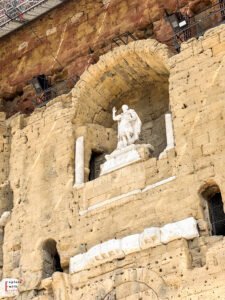Explore with Ersilia contains affiliate links and is a member of the Amazon Services LLC Associates Program. If you make a purchase using one of these links, I may receive compensation at no extra cost to you. affiliate links are how we keep this content free. A huge thanks if you use these as it helps a lot! See the Full Policy for more information.
Have you ever dreamed of wandering through purple lavender fields, exploring medieval villages perched on hillsides, or savoring a café au lait in a sun-drenched plaza? Welcome to Provence, a slice of paradise in southern France that captures everything people love about this beautiful country.
Living in Toulouse, I’m fortunate to be just a 3-hour drive from this magical region, and I’ve made multiple trips exploring its charm. The proximity of Provence to the glamorous French Riviera makes it the perfect combination of rustic countryside and Mediterranean coastline—truly offering the best of both worlds!
If you are coming to the South of France for at least 2 weeks, I recommend splitting your stay for at least 5 days on the French Riviera coast, and a small week in Provence.
These are two different experiences and are worth the hassle of changing hotels. Choose a strategic base in the French Riviera, as for Provence, I recommend staying in either Aix-en-Provence or one of the smallest towns to really get in the vibe.
What makes the best places to visit in Provence so special isn’t just their postcard-perfect beauty, but the feeling they evoke. That indescribable French essence of unhurried enjoyment, stunning natural landscapes, and centuries of history etched into stone walls and cobblestone streets.
In this guide, I’ll share my personal experiences traversing this enchanting region—from the must-see iconic locations to the hidden gems and villages that most tourists miss.
Whether you’re planning your first-ever trip to Provence or looking to discover new corners of this beloved destination, I’ve organized this post to help you create an unforgettable itinerary that captures the true essence of Provençal life.
Let me take you on a journey through lavender-scented hills, stone villages, ancient Roman ruins, and turquoise waters that will make your once-in-a-lifetime trip to Provence absolutely perfect.
The Heart of Provence: Iconic Villages and Towns
Aix-en-Provence: Elegance and Culture
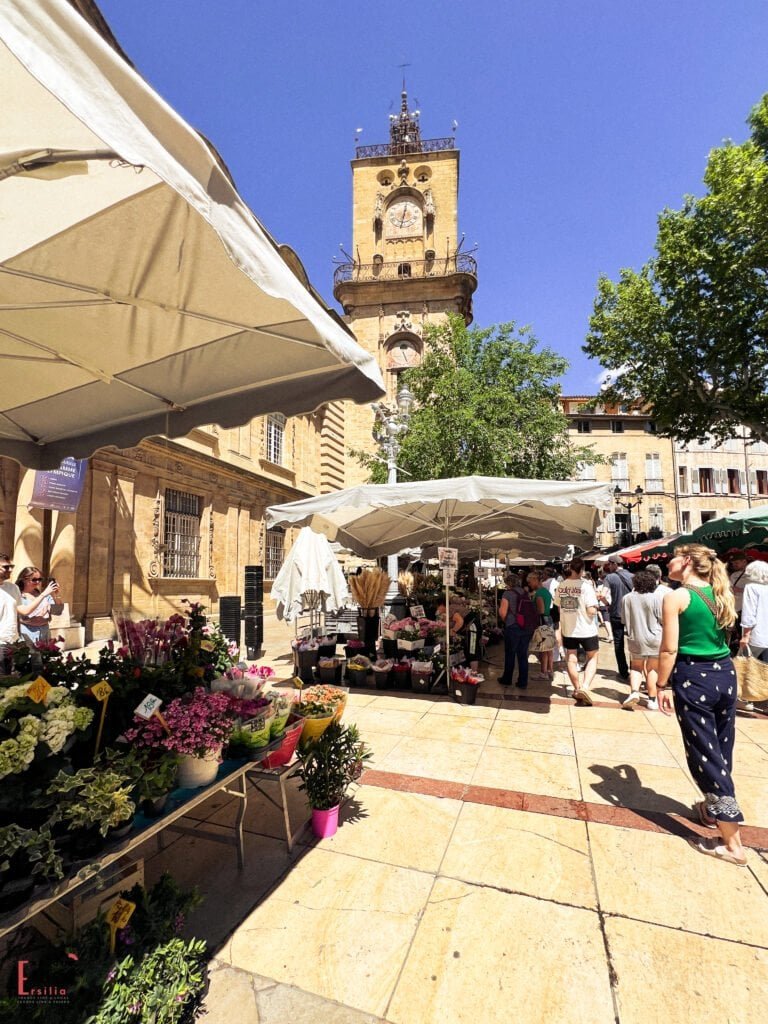
Aix-en-Provence deserves its reputation as one of the most beautiful cities in the region. With its elegant boulevards, bubbling fountains, and sophisticated atmosphere, it’s no wonder this city is often considered the cultural heart of Provence.
One of my favorite experiences is wandering through the grand market that spreads throughout the old town. It’s seriously one of the biggest markets in Provence! The colors, scents, and sounds create a sensory symphony that perfectly encapsulates the region’s abundance. Make sure to visit on Tuesday, Thursday, or Saturday morning when the market is in full swing.
What makes Aix particularly appealing is its position as a perfect base for exploring both coastal Provence and the rural countryside. However, if you’re planning to visit the Gorges du Verdon, keep in mind it’s quite a long day trip from here—about a 2-hour drive each way.
The historic center is a delight to explore, with its honey-colored buildings and charming squares. I particularly love the shaded Cours Mirabeau with its moss-covered fountains and terrace cafés. Grab a coffee, watch the world go by, and embrace the art of doing nothing—a skill the French have perfected!
Saint-Rémy-de-Provence: Where Art Meets Charm
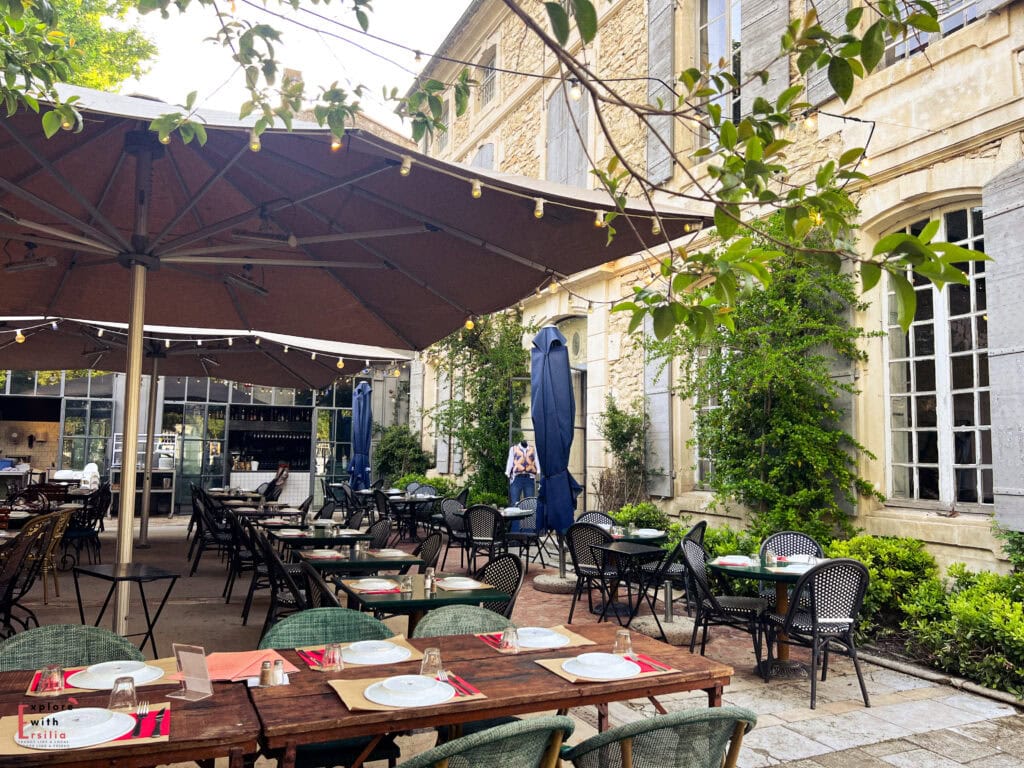
I once heard someone describe Saint-Rémy-de-Provence as “the Saint-Tropez of villages,” and I couldn’t help but laugh because it’s surprisingly accurate! This sophisticated little town has a distinct upscale feel but maintains its authentic Provençal charm.
Although I don’t include Saint-Tropez as a must visit place on the Côte d’Azur, I have to say that Saint-Remy de Provence is definitely worth to add it to your list of the best places to see in Provence.
The facades here remind me of Strasbourg with their decorative exteriors, though with a distinct southern French flair. During my spring visit, the town was adorned with seasonal decorations that made it even more photogenic.
Saint-Rémy makes for both an excellent stop and a great base for exploring the region, though be prepared for slightly higher prices.
The streets are lined with beautiful boutiques selling everything from local delicacies to artisanal crafts. I spent hours meandering through these shops, discovering unique treasures that you simply won’t find elsewhere.
Saint-Paul-de-Mausole: In Van Gogh’s Footsteps
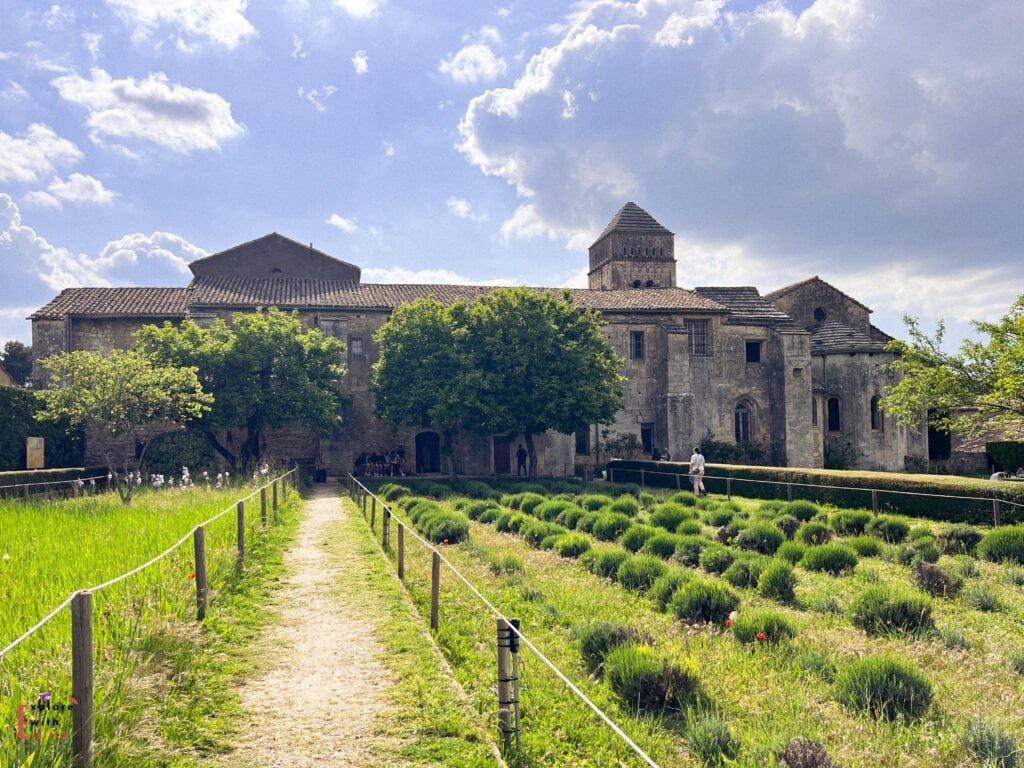
Just at the entrance to Saint-Rémy lies one of my favorite historic sites in all of Provence—Saint-Paul-de-Mausole. This peaceful monastery is where Vincent van Gogh was hospitalized during his final years.
Here’s a practical tip: park at the monastery and walk into the center of Saint-Rémy. You’ll avoid the town’s parking headaches and get to enjoy this incredible site before the crowds arrive.
The complex includes a beautiful cathedral, a serene cloister, and small cute gardens that inspired some of Van Gogh’s most famous works.
What makes this place truly special is how they’ve displayed reproductions of his paintings throughout the grounds, positioned near the actual landscapes that inspired them.
Standing in the exact spots where Van Gogh stood while creating these masterpieces is a profoundly moving experience, even for someone who is not an art passionate, like myself.
Despite the abstract nature of his style, you can clearly see the resemblance between his paintings and the real scenery—it’s like looking through his eyes for a moment.
Avignon: The Papal City
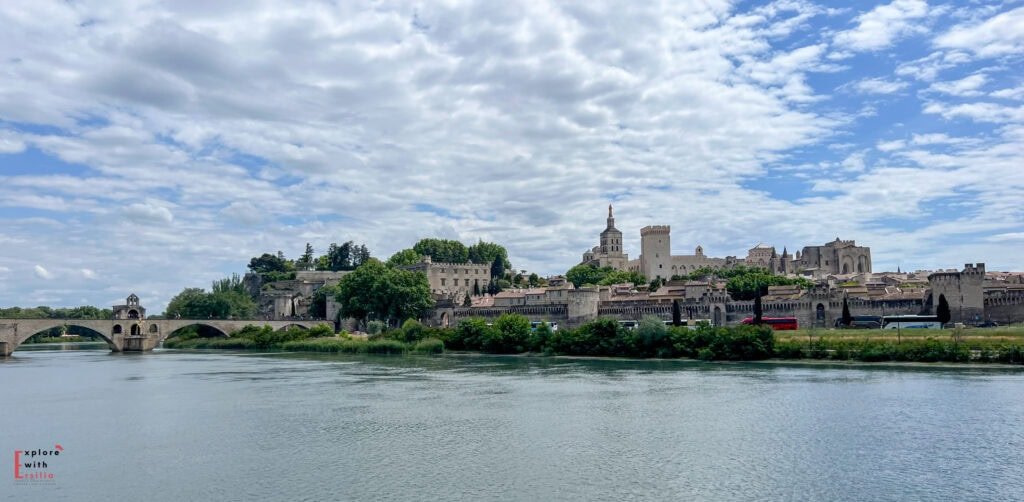
I used Avignon as my base during my second trip to Provence, and despite my initial skepticism, this fortified town completely won me over. Its imposing walls encircle a city rich with history and Italian-influenced architecture—a legacy of its unique position as the seat of nine popes during the 14th century.
The crowning jewel is the magnificent Palais des Papes (Palace of the Popes)—the largest gothic palace in the world. While the interior might feel somewhat empty, the sheer scale and architectural significance make it well worth exploring. Note that the gardens are closed for renovation until March 2026, so plan accordingly.
Want my insider tip for experiencing the palace? View it from the water!
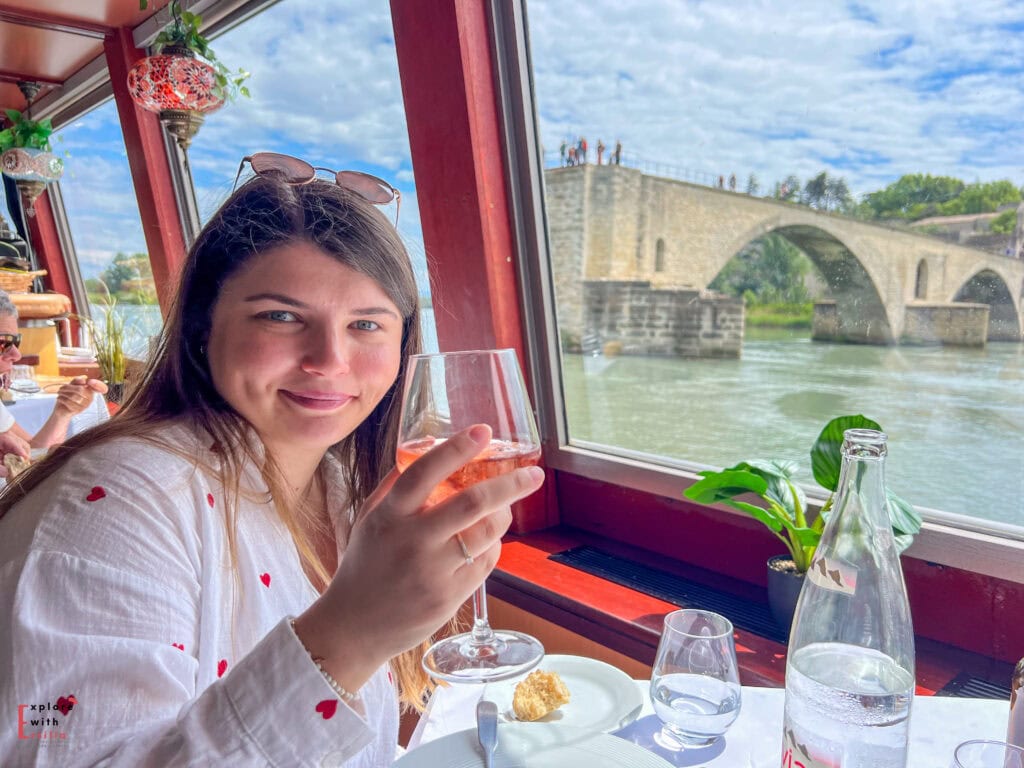
We splurged on a lunch cruise that included champagne and a three-course meal while gliding along the Rhône River. The knowledgeable staff provided fascinating commentary, and seeing the palace from this perspective gave us a whole new appreciation for its grandeur. Yes, it was a bit of an indulgence, but sometimes those special experiences are what make a trip truly memorable.
If the boat ride is not for you, go for a guided food tour. This is a great place to let a local show you the way (to history and stomach!).
Les Baux-de-Provence: Medieval Magic
Built dramatically among the rocky outcrops of Les Alpilles, the medieval village of Les Baux-de-Provence seems frozen in time. This remarkable place has weathered economic ups and downs throughout its history, with roots in rebellion and dispute that give it a fascinating backstory.
The town’s position atop the mountain rewards visitors with incredible panoramic views of the surrounding valleys. Wandering the stone-paved streets and narrow alleyways feels like stepping back several centuries, with the imposing castle ruins standing sentinel at the summit.
What many visitors miss is the Carrières des Lumières (Quarries of Light), housed in a former limestone quarry. This immersive art installation projects the works of famous artists onto the quarry walls, creating a mesmerizing multimedia experience that changes annually.
It’s a perfect example of how Provence beautifully blends the ancient with the innovative.
Perched Villages: Provence’s Crown Jewels
Gordes & Sénanque Abbey: Picture-Perfect Provence

If you’ve ever seen a postcard of Provence, chances are it featured Gordes.
This iconic village, with its stone houses cascading down a hillside, represents the image of the region.
But the most famous view isn’t from inside the village itself but from the road approaching it. When driving toward Gordes, there’s a specific viewpoint where you’ll want to pull over (you’ll know it when you see all the cars stopped!)—this is where you’ll capture that perfect shot.
Just 5 kilometers further lies the Sénanque Abbey, nestled in a quiet valley.
The monastery itself is beautiful, but the scenery reaches peak magnificence during lavender season in late June when the purple fields surrounding the abbey create an absolutely stunning tableau. I’d strongly advise against visiting in July, though—the narrow roads become frustratingly congested with tourists.
Roussillon & Le Colorado Provençal: A Rainbow of Ochre
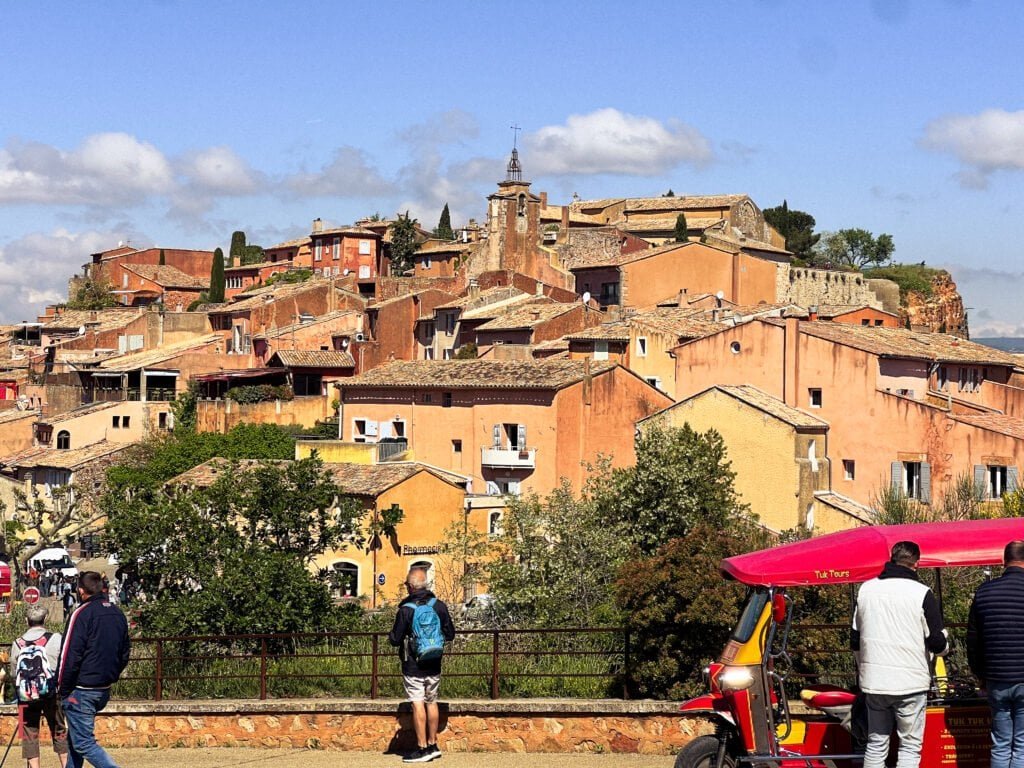
Roussillon stands out from every other village in Provence thanks to its extraordinary palette of ochre-colored buildings. The entire village seems to glow in shades of orange, yellow, and red that change dramatically with the shifting sunlight throughout the day.
If you can schedule your visit for Thursday, you’ll be treated to the village’s vibrant market—an excellent opportunity to sample local products and soak in the authentic atmosphere.
The absolute must-do activity here is the Sentier des Ocres (Ochre Trail), an otherworldly path that winds through former ochre quarries.
I recommend taking the longer 55-minute route rather than the shorter option—the additional views are well worth the extra time. Walking among these vivid rock formations feels like exploring another planet; it’s one of the most unique landscapes in all of France.
Saignon: The True Hidden Gem

I almost feel guilty revealing this one. Saignon is rarely mentioned in tourist guides, and that’s precisely what makes it such a treasure. During our self-guided tour of five Provençal villages, Saignon stood out as the most tranquil and authentic of them all.
The main square feels like it materialized straight from the pages of a storybook, with its ancient stone fountain and plane trees providing welcome shade. There are no souvenir shops or crowds here—just genuine Provençal village life unfolding at its natural, unhurried pace.
What makes Saignon extra special is how it feels untouched by tourism, offering a glimpse into how these villages operated before becoming travel destinations. If you’re seeking that authentic French feeling, this is where you’ll find it.
Vaison-la-Romaine: The Other Side of the River
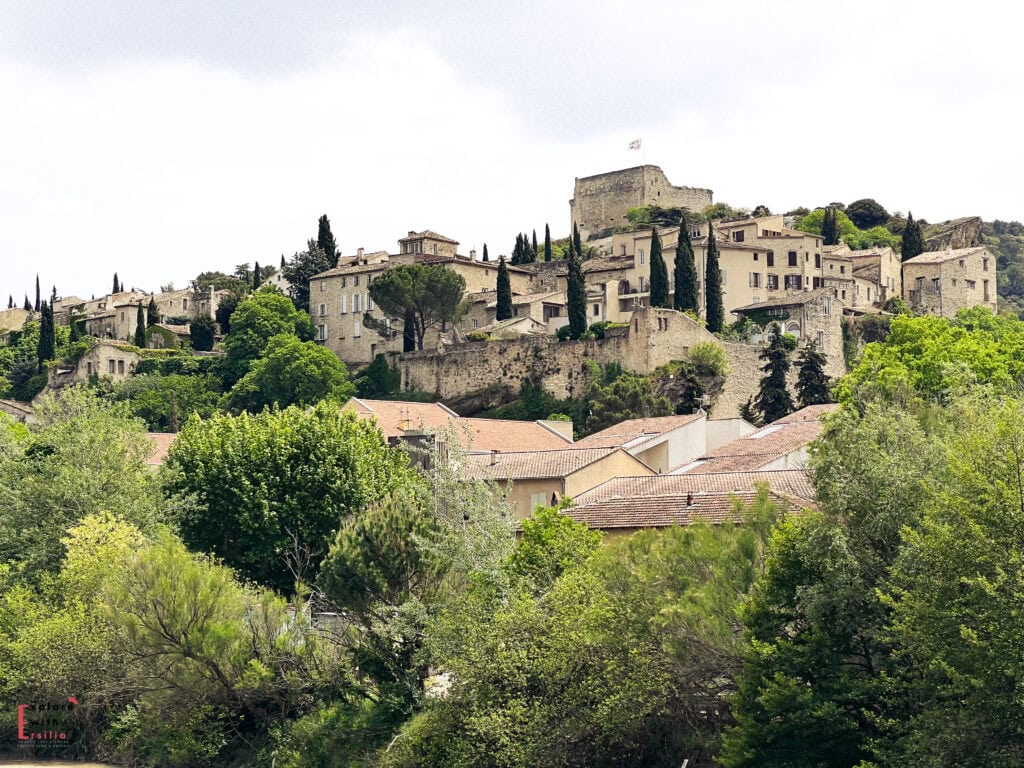
The lower section contains the newer part of town with restaurants, shops, and impressive Roman ruins, while the upper section houses the original medieval village with its beautiful stone buildings clinging to the hillside.
Many tourists come to admire the view of old village from the lower town but miss the true treasure that awaits above.
Take my advice and make the climb to the upper village! The effort rewards you with tranquil streets, ancient architecture, and spectacular panoramas without the crowds that fill the lower parts.
The contrast between the two sections creates a compelling narrative of how this area has evolved through the centuries while maintaining its distinctive character.
Lacoste and Ménerbes: Tuscan Vibes in Provence
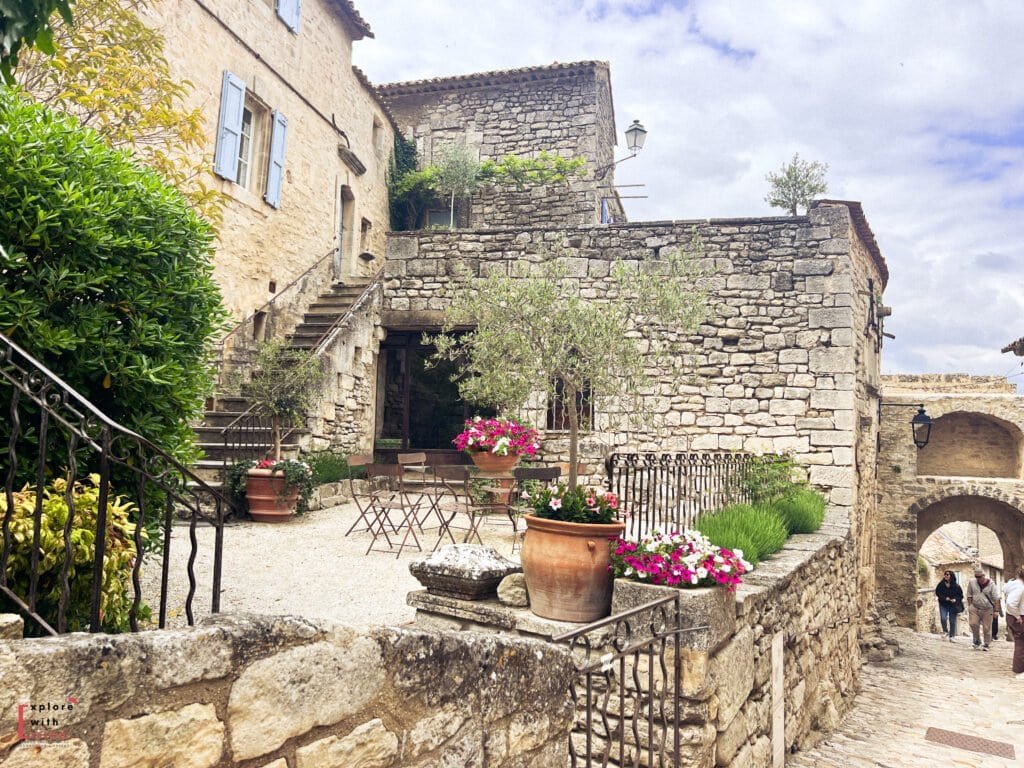
These two villages, located just a 10-minute drive from each other, offer spectacular views across valleys dotted with magnificent estates and vineyards. The panoramas remind me strongly of Tuscany, creating a sense of being in two beautiful regions at once.
Between the two, I find Ménerbes more appealing due to its organic integration with the mountainside—the village seems to grow naturally from the stone beneath it.
There’s something magical about how the buildings and the mountain become one, creating a harmonious blend of human and natural architecture.
Both villages are relatively quiet compared to more famous destinations like Gordes, making them perfect for visitors seeking beauty without the crowds.
Venasque: Medieval Majesty
Venasque is another member of “Les Plus Beaux Villages de France” (The Most Beautiful Villages of France), and it certainly deserves this prestigious designation. Built dramatically on a cliffside, this medieval town offers stunning views of Mount Ventoux in the distance and plains dotted with cherry trees that burst into white blossoms each spring.
Despite sharing medieval origins with other villages in the region, Venasque possesses a more refined character, with detailed wooden doors and pastel-colored shutters that add a touch of elegance to the ancient stone buildings.
Throughout the village, you’ll discover beautiful architectural details and hidden corners offering breathtaking vistas.
Being much closer to Gordes than many realize yet still relatively unknown to most tourists, Venasque definitely merits a detour on your Provençal journey.
The Coastal Charm of Provence
Marseille: Urban Mediterranean Soul
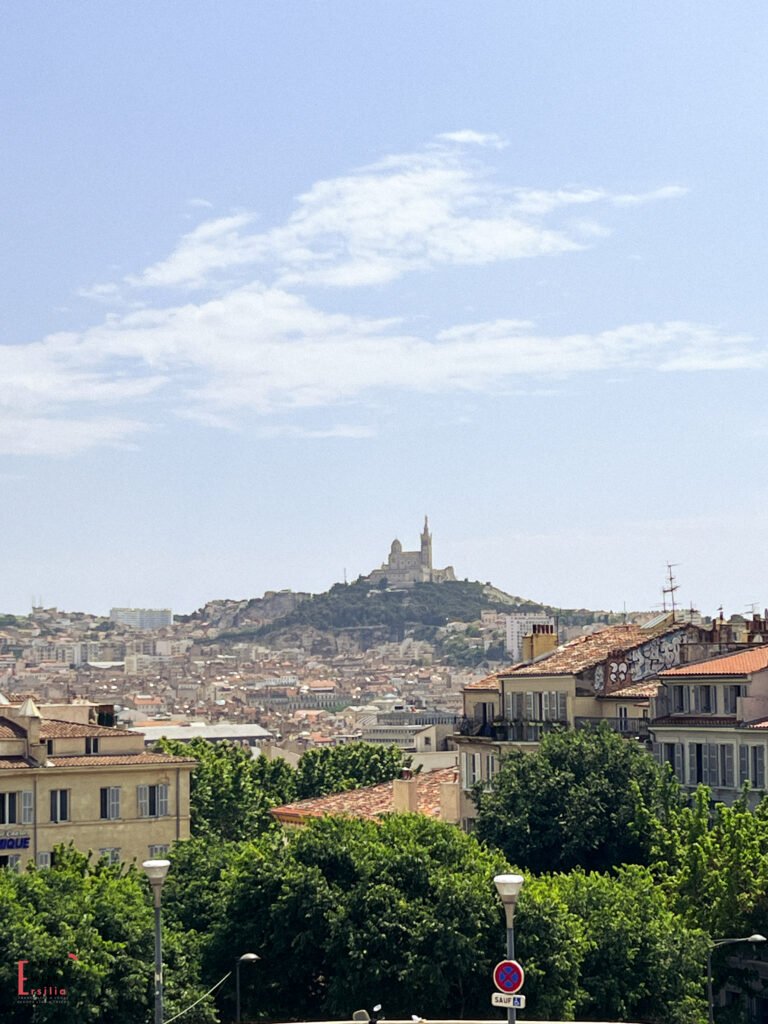
Marseille delivers a perfect blend of urban energy and Mediterranean beauty that can serve as either a quick visit or a multi-day exploration. France’s second-largest city might seem intimidating at first, but it rewards those who take the time to discover its unique character.
During my first visit, I opted for the small tourist train to get a quick overview of the main attractions—an efficient strategy when time is limited! This helped me identify the places I wanted to return to and explore more deeply.
Don’t miss the journey up to Basilique Notre-Dame de la Garde, the iconic church perched on the city’s highest point.
The panoramic views of Marseille and the Mediterranean from here are absolutely spectacular. Another highlight is the fascinating Cosquer Museum, which houses an incredibly realistic replica of an underwater prehistoric cave.
The simulation is so convincing that we initially thought we were viewing the actual cave!
Another great option, if you have more time, is to take a boat to the Frioul Islands. This will give you a whole other view over the city!
Cassis: Coastal Charm in Miniature
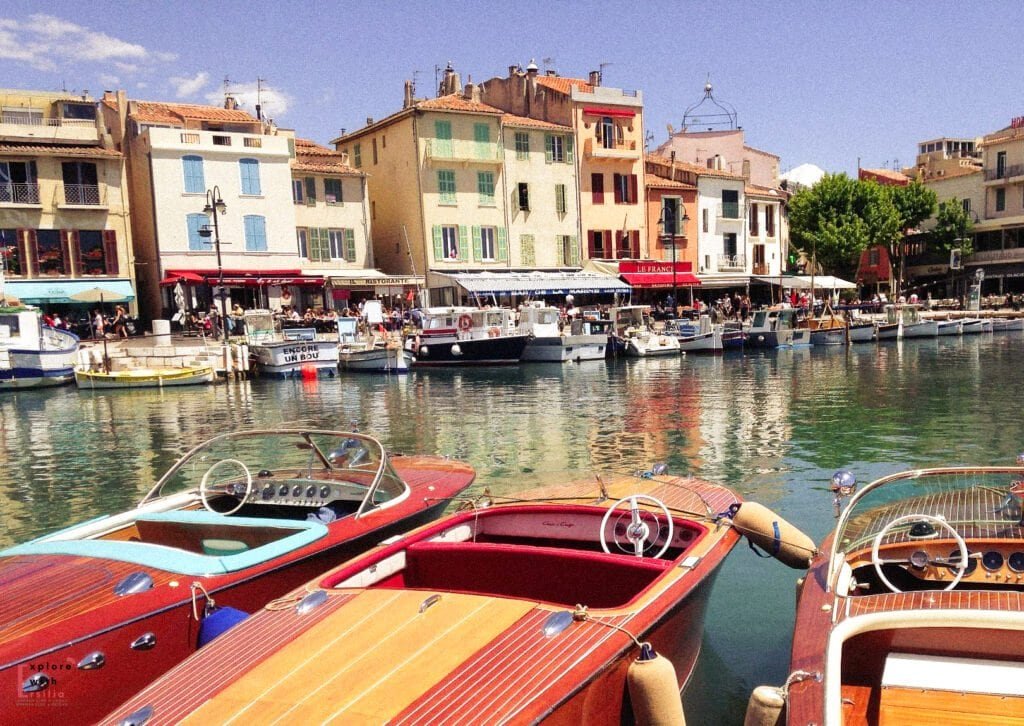
The colorful fishing village of Cassis offers a more intimate coastal experience than its larger neighbors.
Its picturesque harbor, lined with pastel-colored buildings and bobbing fishing boats, creates a postcard-perfect scene that captures the essence of the Mediterranean. It reminds be a bit of Villefranche sur Mer, on the French Riviera, because of the vivid colors of the buildings.
While undeniably beautiful, Cassis becomes extremely crowded during the summer months.
If possible, plan your visit for spring or fall to enjoy this charming village without fighting through throngs of tourists. The atmosphere is much more relaxed, and you’ll have a better chance of experiencing the authentic local culture.
Les Calanques National Park: Mediterranean Majesty
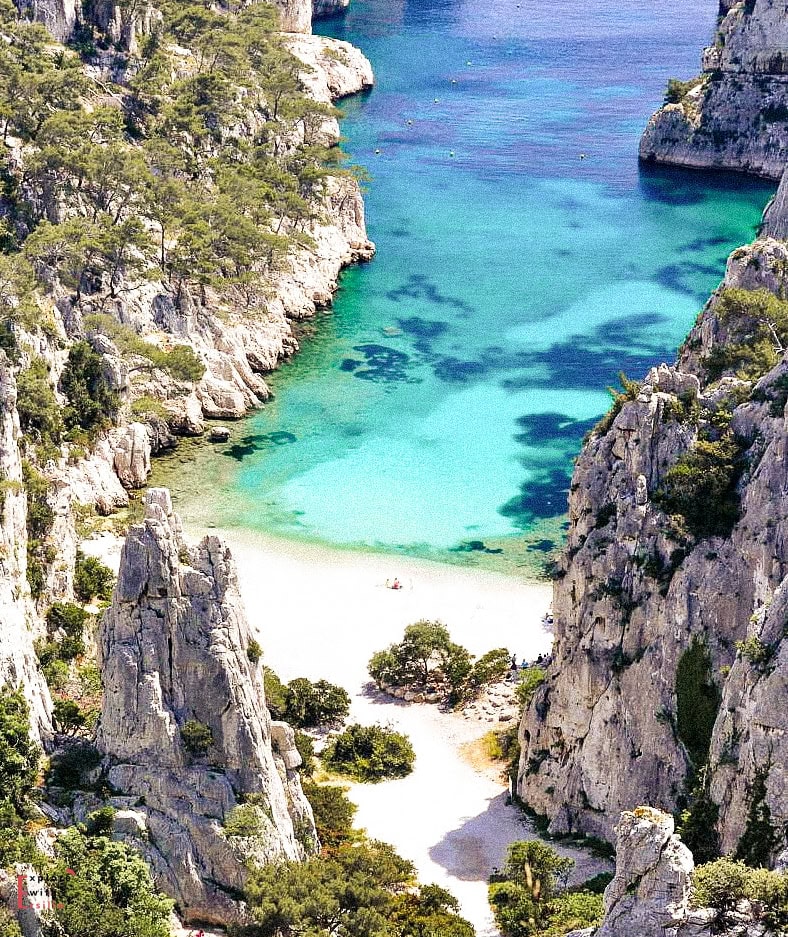
The Calanques National Park stretches along the coastline with dramatic limestone cliffs plunging into water as brilliantly blue as the Gorges du Verdon. This natural wonder deserves a place on every Provence itinerary, though access is now regulated to protect this fragile ecosystem.
For 2025, reservations are mandatory during peak periods: June 21-22, every day from June 28 to August 31, and the weekends of September 6-7 and 13-14. This system helps preserve the environment while ensuring visitors can enjoy the spectacular scenery.
You can explore the Calanques in several ways. Hiking from Cassis to Calanque de Port Pin takes a relatively easy 30 minutes, but reaching the most beautiful inlet, Calanque d’En Vau, requires about 90 minutes each way on challenging terrain. The reward for this effort is fewer crowds and truly breathtaking scenery.
My personal recommendation? Rent a kayak for five hours to fully explore these magnificent formations from the water. This gives you a completely different perspective and access to areas unreachable by land, such as the enchanting little cave at Calanque de l’Oule.
If kayaking seems too strenuous, consider booking a private boat tour—though you won’t be able to disembark at the beaches this way.
Always check for fire alerts before visiting, as access to the park may be restricted during high-risk periods.
Inland Treasures: Rivers, Villages, and Gorges
L’Isle-sur-la-Sorgue: The Venice of Provence
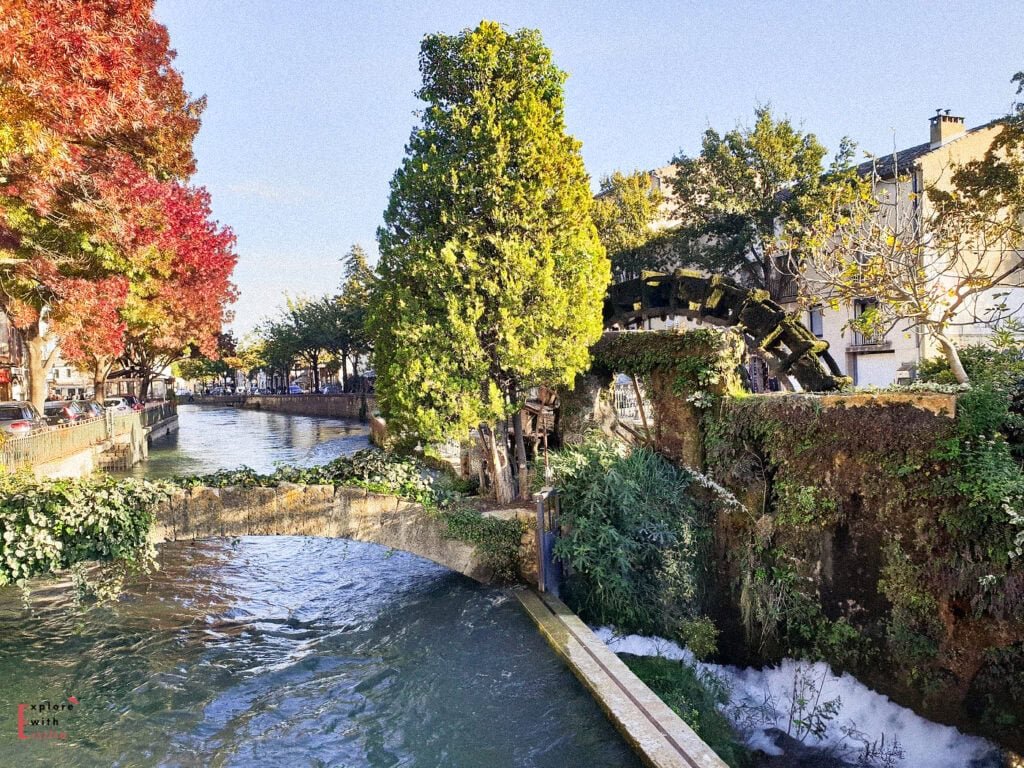
L’Isle-sur-la-Sorgue gets its nickname from the crystal-clear River Sorgue that wraps around and through the town, creating a network of canals reminiscent of Venice— on a much smaller scale. (My husbands finds this funny, it says there is no way we can compare it to Venice!)
The ancient water wheels that once powered the town’s industry still turn slowly in the current, adding to the romantic atmosphere.
What draws many visitors to this charming town is its reputation as the antiques capital of Provence. The riverside antiques market is a treasure hunter’s paradise, with vendors selling everything from fine French furniture to unique vintage trinkets. Even if you’re not shopping, wandering among the stalls is a delightful experience. I wish I has more time there !
My favorite way to enjoy L’Isle-sur-la-Sorgue is to choose one of the many cafés along the water, order a glass of local rosé, and simply watch the world go by. The gentle sound of the flowing river creates the perfect soundtrack for embracing the laid-back Provençal lifestyle.
Orange: Roman Splendor
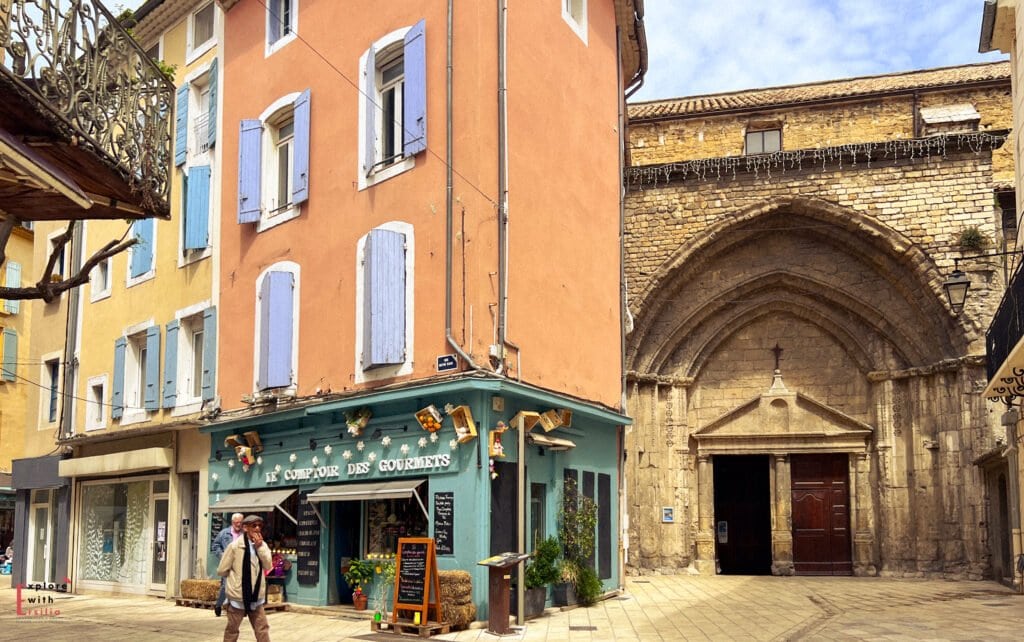

The charming town of Orange makes an excellent base for exploring northern Provence or a rewarding day trip destination. What sets this town apart is its remarkably preserved ancient Roman theater, one of the finest Roman ruins in Europe. (Honestly, you feel like in Rome!)
The theater offers an engaging visitor experience with 3D options and theatrical guides that bring history to life. Standing in this 2,000-year-old venue, it’s easy to imagine Roman citizens gathering for performances just as we do today. This place was a true surprise for us, we did not expect it to be this entertaining.
Sometimes there are concerts with lightshows that are held in the theater, if you have the chance to be there at those dates, make sure to book your place! This was you’ll see the theater just how it was meant to be seen.
Beyond the theater, Orange boasts several inviting streets lined with cafés and restaurants. I recommend setting aside at least half a day to properly explore this underrated gem and enjoy a meal at one of the local establishments.
Gorges du Verdon: Nature’s Masterpiece
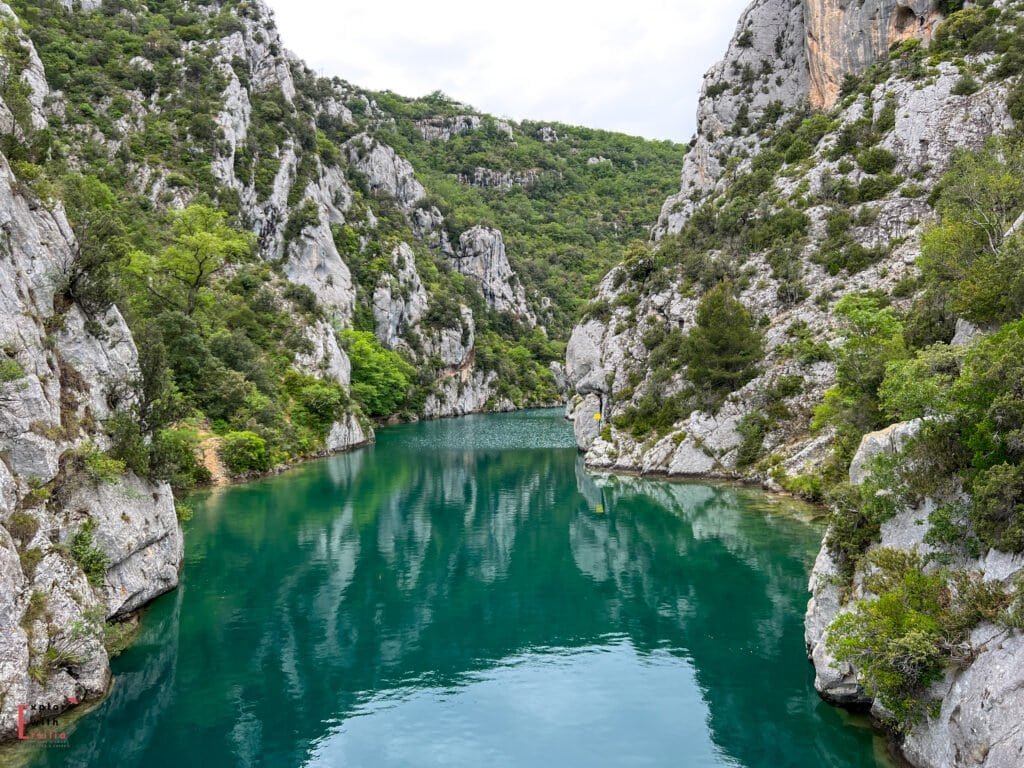
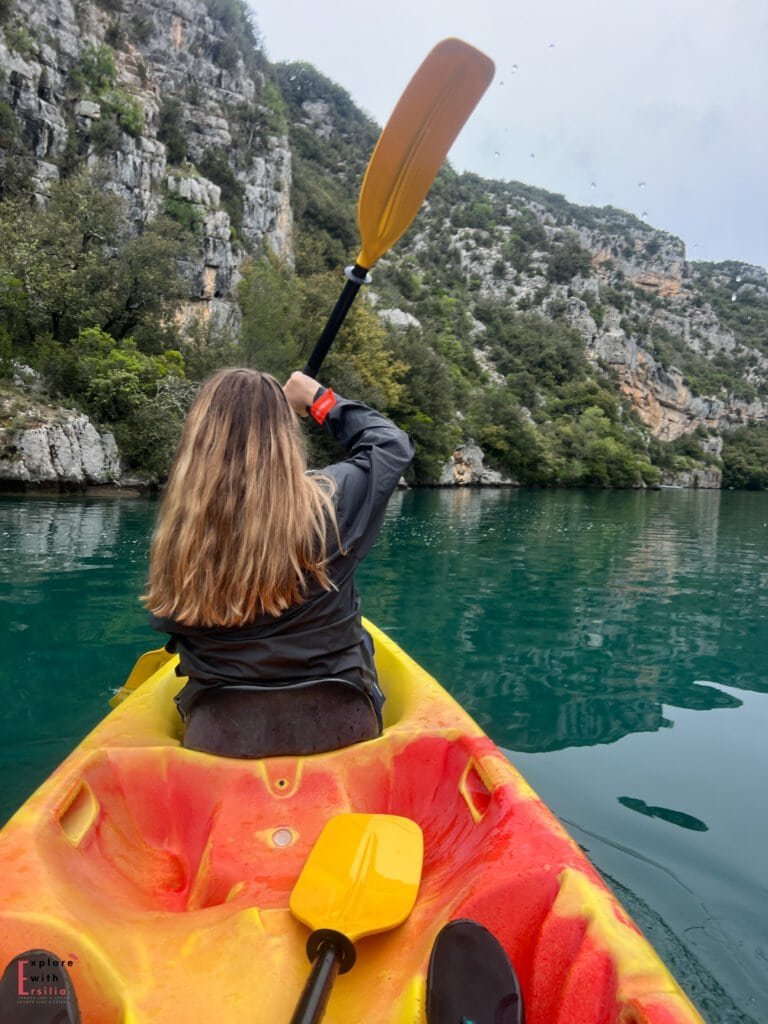
The Gorges du Verdon—often called the “Grand Canyon of Europe”—showcases nature at its most spectacular. While it requires a significant journey from most Provençal bases (making it a long day trip from Aix, Marseille, or Nice), the breathtaking scenery justifies every minute spent traveling.
Before visiting, I’d seen countless photos of the gorge’s turquoise waters online and assumed the color had been digitally enhanced—I was wrong! The water really is that intensely blue, creating a striking contrast against the white limestone cliffs.
For the ultimate experience, rent a canoe to paddle through the gorge, allowing you to appreciate its scale and beauty from water level.
Alternatively, drive along the stunning Corniche Road for dramatic panoramic views from above.
The winding route offers numerous viewpoints where you can safely pull over and marvel at this natural wonder.
Moustiers-Sainte-Marie: Gateway to the Gorges

At the entrance to the Verdon region lies the enchanting village of Moustiers-Sainte-Marie, dramatically built into a steep hillside. Exploring this village definitely provides a workout as you climb its inclined streets, but each step reveals new vistas and architectural delights.
A star suspended on a chain between two cliffs has hung above the village for centuries, adding to its unique charm. Legend has it that a knight hung the star in gratitude for returning safely from the Crusades.
The village is also famous for its hand-painted faience pottery, with several workshops continuing this centuries-old tradition. These beautiful pieces make perfect souvenirs that capture the artistic spirit of Provence.
Conclusion: Creating Your Perfect Provençal Journey
After multiple trips exploring this magnificent region, I’m convinced that Provence offers something magical for every type of traveler.
From the lavender-scented countryside to the azure Mediterranean coast, from Roman ruins to medieval villages, the diversity of experiences available in this relatively compact area is truly remarkable.
For first-time visitors seeking that French feeling, I recommend focusing on the heart of Provence—the villages of Gordes, Saint-Rémy, and Roussillon will capture your imagination, while the natural wonders of the Verdon Gorge and the Calanques will leave you speechless.
Base yourself in either Aix-en-Provence or Avignon to minimize travel time between destinations.
Don’t be afraid to venture beyond the famous sites, though. Some of my most precious memories come from unexpected discoveries in places like Saignon and Venasque—villages where authentic Provençal life continues undisturbed by mass tourism.
Whatever itinerary you choose, remember to embrace the Provençal pace of life. Take time to sip coffee at a village café, sample local wines, and absorb the sensory pleasures that surround you.
After all, the true magic of Provence isn’t just in its spectacular sights but in how it teaches us to slow down and savor life’s simple joys.
Bon voyage et à bientôt en Provence!
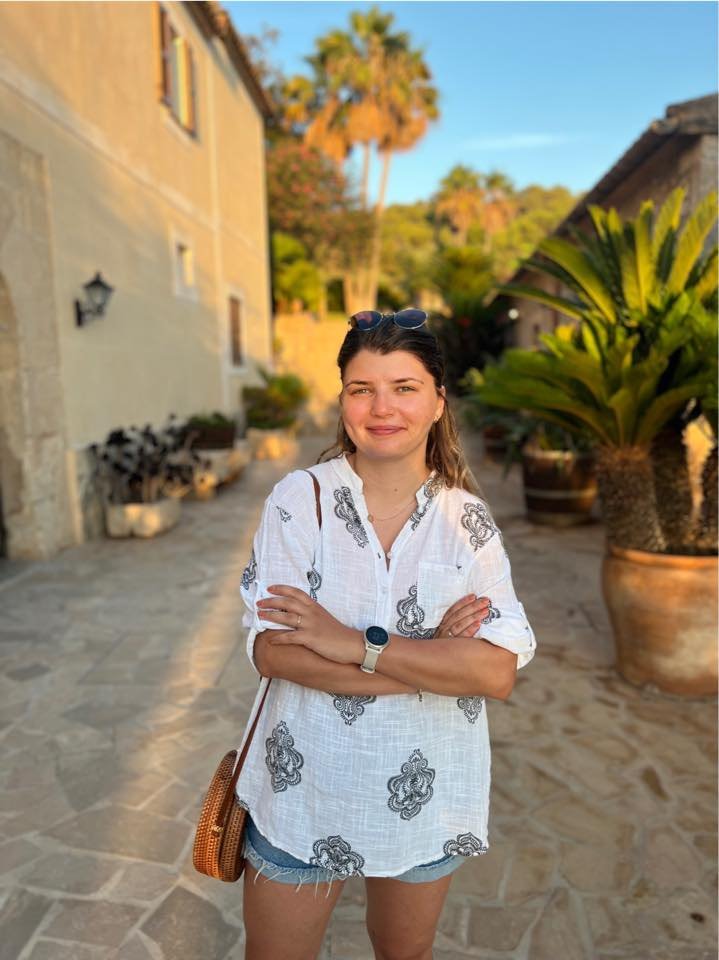
author page / EDITORIAL POLICY PAGE
Hi, I’m Ersilia

Toulouse, France

Originally from Romania

English & French Content
As a Romanian expat living in the heart of southern France, I guide English speakers to discover authentic French experiences without the language barrier. My unique perspective as both a local and an expat allows me to share insider tips, cultural insights, and practical advice that you won’t find in typical guidebooks.
My Expertise:
- French life and culture navigation
- Hidden gems across French regions
- Eastern vs Western European perspectives
- Local insights and practical travel tips
Blog Socials
Personal Pages








